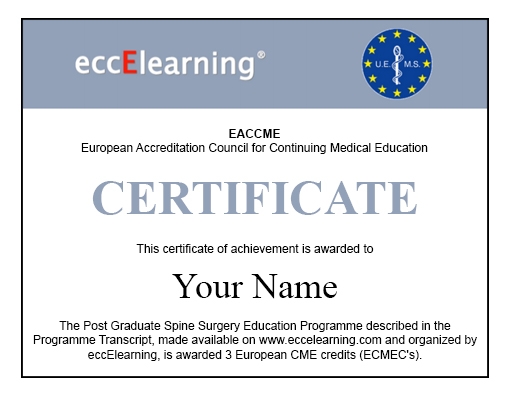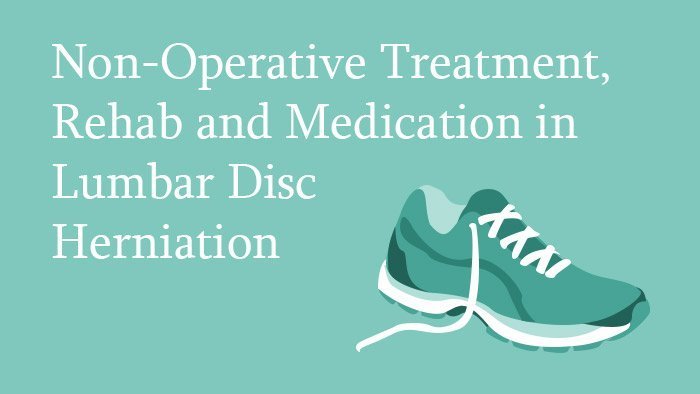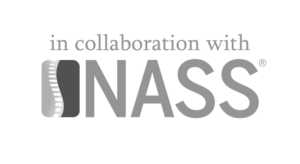Non-Operative Treatment of Lumbar Disc Herniation
This spine surgery lecture is about the non-operative treatment of lumbar disc herniation, as well as rehabilitation and medication.
Enrol to View This Lecture
Access to all 180 Spine Lectures with our Spine Surgery Education Programme.
Lecturer: Marco Monticone, MD, PhD
Includes:
- Online Lecture Presentation
- Pre- and Post- Learning Assessments
- Additional Learning Materials (Standard Package only)
- Up to 3 CME Credits
Ref.ID: 3_3_monticone
DOI: 10.28962/01.3.042
What you will cover in this lecture
In this spine surgery lecture, non-operative treatment of lumbar disc herniation is covered.
The author describes the range of modalities available for non-operative management including medication, spinal manipulations exercises, injection therapies and adjuvant therapies such as traction and ozone therapy. All the main indications and side effects of major groups of medication employed, such as NSAIDs, opioids, steroids etc., are described.
The physical modalities are explained in detail such as ultrasound therapy, low level laser therapy and short wave diathermy. The postulated mechanisms of actions are discussed and relevant clinical data about their efficacy is provided.
Spinal manipulations are discussed in detail with special reference to their contraindications and relative contraindications so as to guide the listener, especially when their use is going to be counterproductive. As exercises are a cornerstone in physical management of disc herniation, they are explained in great detail with informative diagrams in light of clinical data to support their employment.
The role of injection, traction and oxygen ozone therapy is explained with relevance to the documented relief they provide to the patients.
Overall, this lecture will aid the listener in understanding the amount of relief in symptoms possible by physical therapy and to make judgement for surgery clearer.
Learning Objectives
- Conservative treatments scope
- Efficacy and long term outcome of conservative treatment
Target Groups
Practicing Spine Surgeons
in Orthopaedic or Neurosurgical services for Continuing Education or recertification
Marco Monticone, MD, PhD
- Physical Medicine and Rehabilitation Scientific Institute of Lissone IRCCS, Lissone
eccElearning Participation
Author
Lecture Presentation
Non-Operative Treatment of Lumbar Disc Herniation, Rehab and Medication
Includes:
- Online Lecture Presentation
- Pre- and Post- Learning Assessments
- Additional Learning Materials (Standard Package only)
- Up to 3 CME Credits

Enrol to View This Lecture
Access to all 180 Spine Lectures with our Spine Surgery Education Programme.
Frequently Asked Questions
Q: What is an eccElearning Lecture like?
A: Each Lecture includes the Lecture Presentation, Additional Learning Resources, Pre-Learning Quiz and Lecture Assessment.
Each Spine Surgery Lecture is viewed online in video format and lasts from 20-45 minutes. The Lectures contain relevant additional learning resources (book chapters, research papers, surgical videos, master lecture videos, case reports, review articles, etc.), which are presented in context and viewable immediately for your convenience.
Lecture 5.1 is an invited Master Lecture and does not include the Quiz and Assessment components.
Q: How much time will a Lecture take?
A: Lecture presentations typically take 20-45 minutes to run. However, candidates are required to review the compulsory and recommended additional learning resources contained within the Lecture. The time taken to view the Lecture and review the additional resources is in the range 3-4 hours per Lecture.
Q: What kind of credits do I get from the Lecture?
A: Each Spine Surgery Lecture can confer up to 3 Continuing Medical Education (CME) credits, certified by European Accreditation Council for Continuing Medical Education (EACCME). The CME credits are awarded to the candidate on successful completion of the online Lecture. The number awarded depend on the number of additional learning materials available in a Lecture - premium versions of the Diploma and Modules include more material for each lecture, so confer more CME Credits.
Q: What payment methods are accepted?
A: All major credit and debit cards.
Q: What are CME Credits?
A: CME stands for Continuing Medical Education. You are awarded CME Credits for undertaking an approved course of medical education. Each Lecture that you complete successfully adds to your CME Credits total. All Lectures provided by eccElearning are accredited by the European Accreditation Council for Continuing Medical Education (EACCME), of the Union Européenne des Médecins Spécialistes (UEMS). You can print out your Certificate of CME Credits after the completion of any Course or Lecture.
Q: What do I do if I fail a Lecture Assessment?
A: You are permitted to retake a Lecture Assessment up to two times. The Lecture Assessment will be made available to you again 14 days after a failed attempt. If you’ve failed the Lecture Assessment three times, please get in contact with us to discuss your options.
Q: What courses does eccElearning provide?
A: We have the Diploma in Spine Surgery with Modules individually purchasable, and Spine Surgery Specialist Certificates in Radiology and Physiotherapy.








